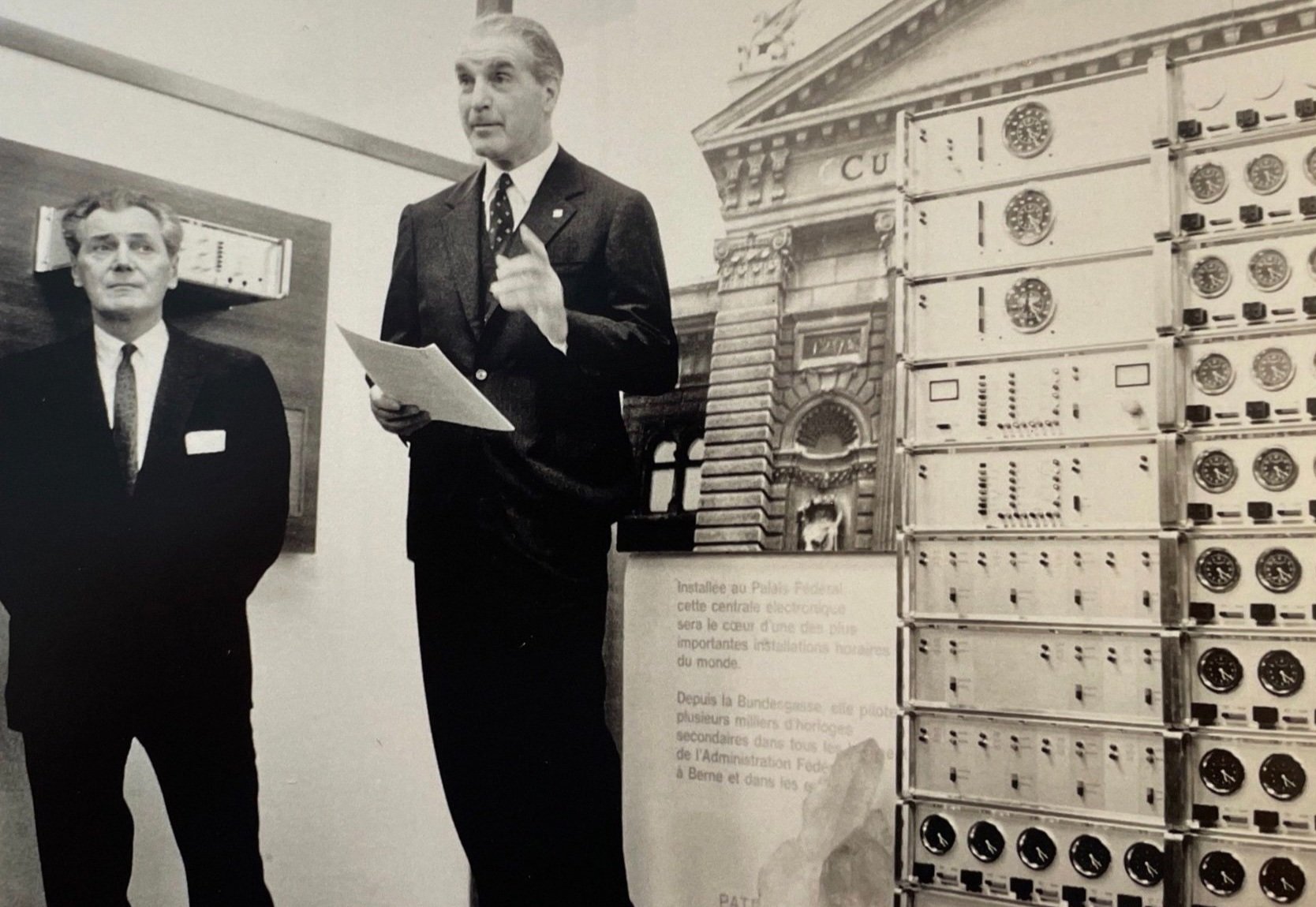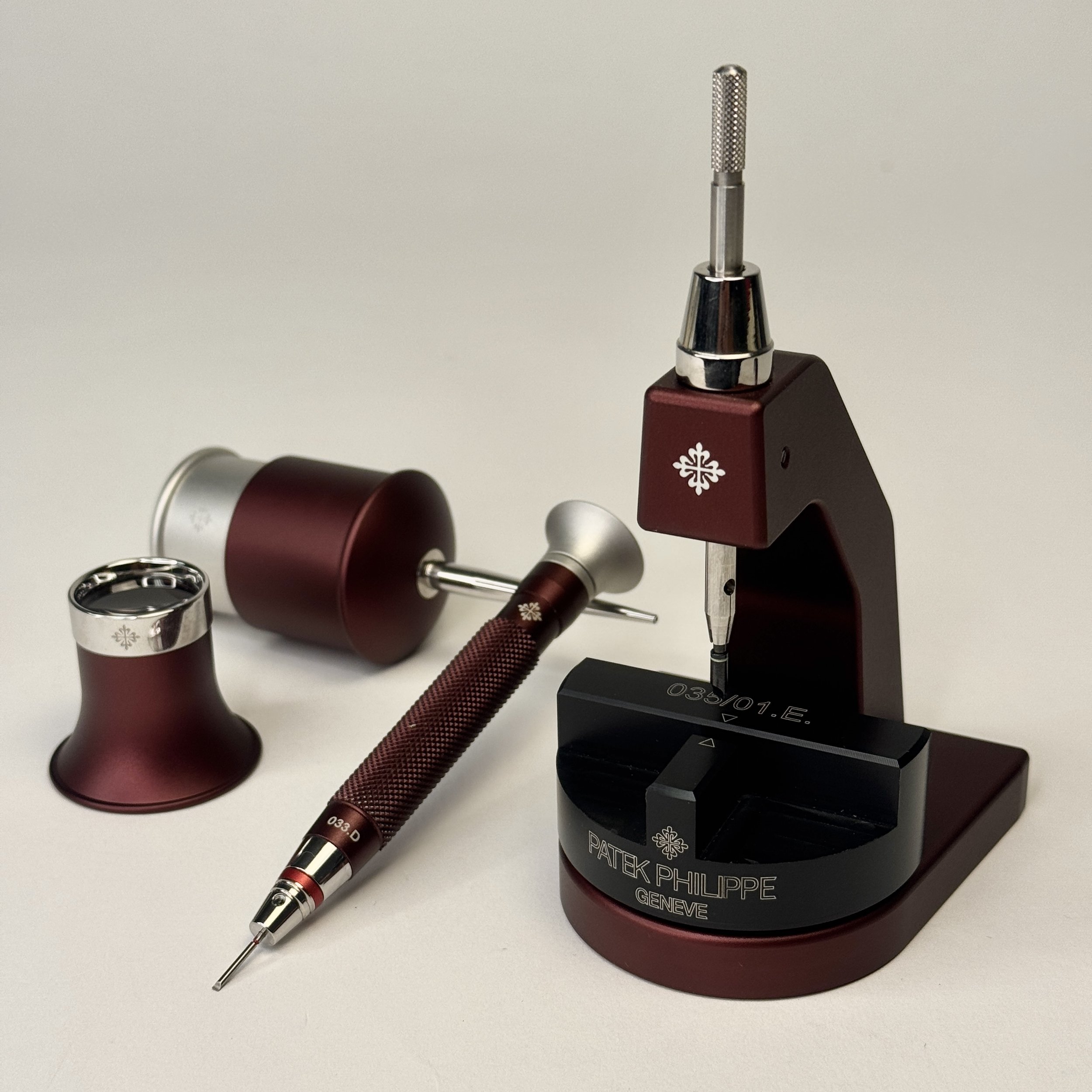Tradition and Innovation: Patek Philippe's Electronic Timing Odyssey
One day in 1939, Patek Philippe's renowned watchmaker René Mathez was intently studying the paper strip produced by a box placed on his desk. It was a crucial moment as Mathez was examining an American-imported quartz timing instrument first used in Switzerland.
Charting Uncharted Territories: The Electronic Division
Logically, after briefly experimenting with the novel quartz regulator watches, Patek Philippe was expected to abandon the featureless quartz products and continue to delve into the precious traditional watchmaking craftsmanship.
However, the reality was not entirely so, as evidenced by the 2022 electronic clock exhibition "Meeting Point." The exhibition showcased the largest collection of electronic clocks globally, leading viewers into an imagined future scenario: in that parallel universe, Patek Philippe's reputation was not associated with super-complicated wristwatches or elegant manual-winding simple time display wristwatches but closely linked with layers of matte steel frames, intertwined with the dials, switches, sockets, buttons, indicator lights, and hands between the frames.
A High-Tech Vision
This high-tech vision of Patek Philippe originated from Mr. Henri Stern, the then-president, who also cherished traditional watchmaking craftsmanship and was fond of collecting antique enamel works.
In 1937, Henri Stern was sent to the United States, where he stayed until the late 1950s. The advanced technology and progressiveness of the US made a deep impression on this successor of the Stern family. He viewed watchmaking as a pursuit of cutting-edge science.
The Legendary Patek Philippe T3
The Patek Philippe T3, dubbed the "Swiss Parliament Clock," is a remarkable timekeeping masterpiece crafted around 1971. Standing at an impressive height of 1.48 meters, this clock boasts a distinctive dual-tower structure, incorporating a total of 22 levels split between its left and right towers. This intricate system, which took Patek Philippe approximately two years to manufacture, features three "reference clocks" and 64 subordinate dials, all installed within a mere 14 days.
At the heart of the T3's precision is its top three levels on the left tower, which house three independent high-precision quartz clocks. These clocks are integral to the T3 master clock timing system, serving as the primary reference timekeepers. A redundancy system is in place, leveraging the trio of reference clocks to maintain the master clock's accuracy and vigilantly monitor for any discrepancies.
To enhance its timekeeping capabilities further, the T3 incorporates an advanced radio-controlled system. This system includes an antenna and a long-wave receiver tasked with capturing time signals from the Prangins Swiss Time Observatory. Upon receiving these signals, the main clock synchronizes its seconds pulse every second, a groundbreaking feature that Patek Philippe patented in 1967.
Additionally, the right tower, along with the lower levels of the left tower, is home to 64 subordinate dials. These dials display the time across different regions, enabling the Swiss Federal Parliament Clock to provide precise time for 257 rooms within the building. Impressively, if needed, the system can also synchronously drive up to 6,000 subordinate clocks.
A notable feature of this system is the control panel located to the right of the top-level reference clocks, specifically designed for adjusting daylight saving time compensation. This attention to detail underscores Patek Philippe's commitment to both precision and practicality in the design of the T3.
Establishment of the Electronic Department
In 1948, Patek Philippe established its own electronic department in Geneva, where the brand's historical headquarters also set up a timekeeping laboratory during the same period. The lab could receive time signals transmitted from Neuchâtel, Switzerland; the main clock synchronized with this signal and automatically adjusted the subsidiary clocks at each workstation, as well as the famous outdoor clock on the roof.
Subsequent breakthroughs followed. In 1952, Patek Philippe produced its first all-electronic timer. Six years later, Henri Stern proudly announced that the company's electronic department had created the world's first miniaturized quartz chronometer, winning the US Government Miniaturization Award. Patek Philippe took this opportunity to declare that it was not only adept at making exquisite mechanical wristwatches but also a major supplier of precision electronic timing systems.
Innovations and Global Recognition
In 1962, Patek Philippe released the Chronotome, a fully transistorized miniature table clock. In 1963, West Berlin Mayor Willy Brandt gifted a Chronotome to then-US President John F. Kennedy, making this clock that embodied the essence of the electronic age widely known. The Chronotome was Patek Philippe's first series-produced quartz chronometer and the first of its kind to undergo precision testing at the Swiss Observatory... Even the Geneva and Neuchâtel Observatories had to adjust their timing accuracy from two decimal places to three to synchronize with the Patek Philippe Chronotome. The electronic department of Patek Philippe condensed precision timing devices, previously only kept in high-tech research institutions, into a box that could be placed on a desk.
Patek Philippe's Contribution to Precision Timing
However, Patek Philippe's electronic timekeeping was far more than just office equipment. In 1961, the company launched its first master clock using a quartz oscillator and solid-state circuits, completely eliminating the need for electronic contacts. This innovation set off a wave of precision timing devices supplied en masse to industries, large organizations, transportation networks, and various sectors nationwide.
1964 was particularly significant for Henri Stern. Twenty-five years after Patek Philippe imported its first electronic timing instrument from the US, the company began supplying timing equipment for the World's Fair, revolutionizing the field of electronic clocks. A handbook titled "Patek Philippe and the Swiss Timing Center" mentioned: "At that time, the New York World's Fair sought precise timing tools... With over a decade of experience in advanced electronic timing devices, Patek Philippe was invited to provide the main equipment."
Legacy and End of an Era
The handbook also joyfully stated that not only the World's Fair benefited from Patek Philippe's expertise, "Patek Philippe's digital clocks and digital chronometers were key equipment for the countdown to space flights." Thus, Patek Philippe's timing devices also aided the space race.
Patek Philippe was determined to pioneer new grounds, striving to complement electronic timing systems with mechanical wristwatches in pursuit of precision timing, as evidenced by a 1960 advertisement: "After the introduction of the Gyromax® balance wheel supporting continuous adjustment, Patek Philippe men's wristwatches set new records in accuracy and reliability. At the same time, professionals in Patek Philippe's laboratory passionately perfected the brand's renowned portable quartz clocks, achieving a precision of no more than 0.004 seconds per day, an error of only 4 milliseconds in 86,400 seconds."
Despite this, like many of its masterful wristwatches, the design philosophy and structural craftsmanship of Patek Philippe's electronic timing tower remain timeless. Although these timing devices no longer operate, they still stand tall, like sentinels from the bygone electronic era, as awe-inspiring as the Temple of Petra or the giant statues of Easter Island.
April 5, 2024 - Written By Phil LL
Source information and image courtesy of Patek Philippe Magazine, Issue Number 05-02, by Nicholas Foulkes, Joel Stans.














